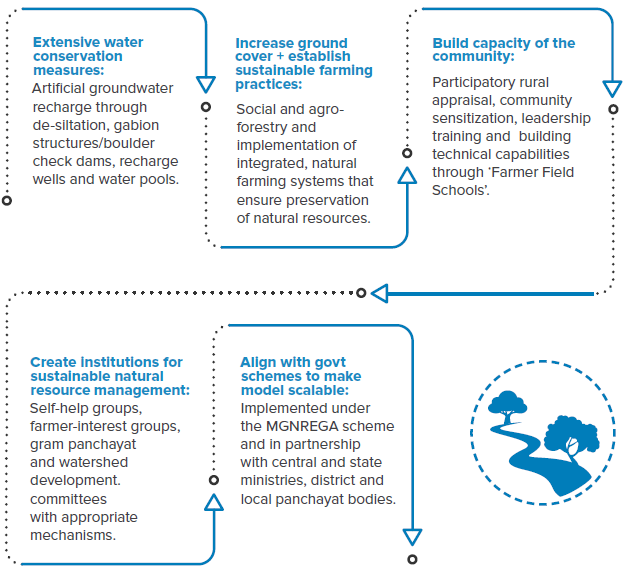
GUIDESTAR
Platinum Seal of Transparency

Platinum Seal of Transparency
Radical land exploitation: Over the last 4 to 5 decades, forests are being converted into agricultural lands. Agriculture lands are becoming industrial, commercial and residential properties. With massive deforestation, trees and their roots are no longer there to hold and protect the soil, leading to soil erosion. The soil that is washed off, ends up filling the river-beds and lake beds, causing siltation and impermeable surfaces.
Disastrous Groundwater Management: Increasing dependence on groundwater has resulted in indiscriminate extraction without regard to the recharging capacities of aquifers and other environmental factors. The adverse impacts can now be seen in the form of the long-term decline of ground water levels.
Migration: With no water for irrigation, hundreds of families have had to leave their lands in search of water Distress migration is rooted in hunger and suffering, and those left behind suffer the most.

Extensive research has shown that the cause of a dying river is not failed monsoons, but mismanagement and unchecked overuse of water, year after year. Our strategy has been to reverse that cycle.
We ask the right questions: Where has India’s water gone? We realize that greed and negligence have destroyed our hydrological cycle and natural ecosystems. We harnessed the best minds in ecological conservation and riverine basin management and worked to replenish underground water systems, reforest barren lands and restore the biodiversity of the regions.
It’s not a one-size-fits-all approach: Water profiles, soil types, ground cover biodiversity and socio-economic-cultural challenges vary from region to region making it necessary for us to think on our feet. We bring our expertise in not only integrating modern with Indigenous Technology and Knowledge (ITK), but creating a convergence between various stakeholders who would normally function in silos, thus ensuring tangible outcomes.
Of the people, by the people, for the people: We believe that sustainable development will happen only when people of the land realise that they have the power to change, are empowered with business development know-how and equipped with the right skill-sets to take responsibility for decentralised management of natural resources. Our role has been to help renew the lands and return them to their natural owners.

Copyright © 2021. All rights reserved.